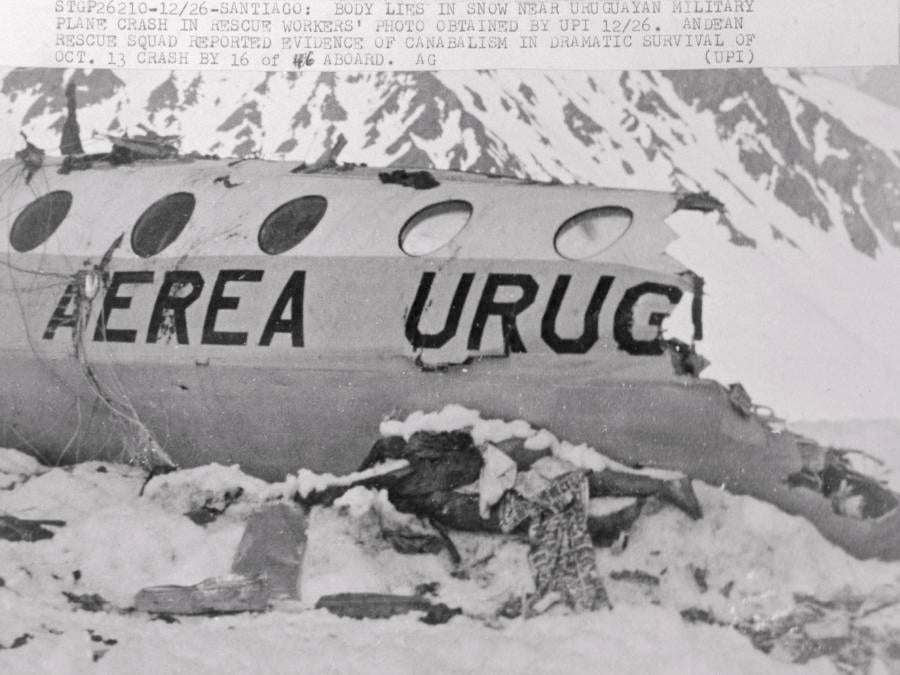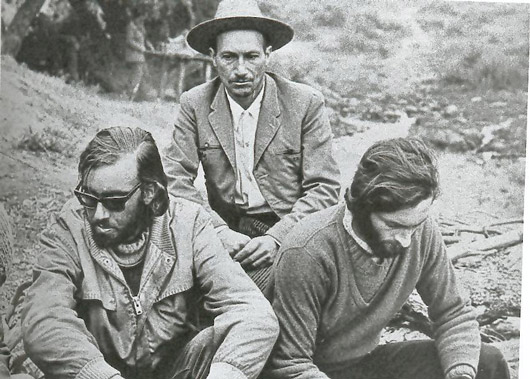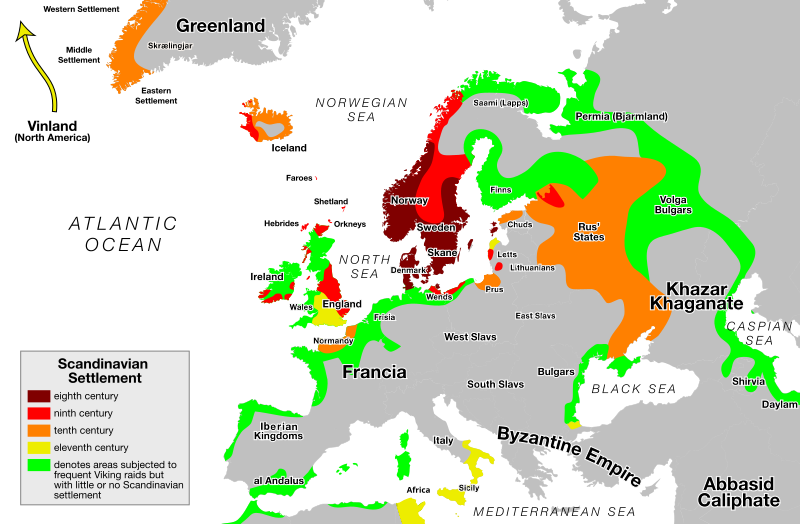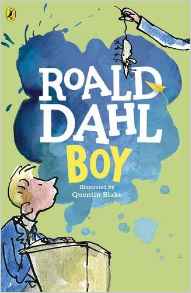CHAPTER 1
miércoles, 4 de diciembre de 2019
martes, 12 de noviembre de 2019
viernes, 8 de noviembre de 2019
READING. FLIGHT 571 CRASH
How the Uruguayan Air Force Flight 571 Crash Drove a Rugby Team to Cannibalism
:focal(632x910:633x911)/https://public-media.si-cdn.com/filer/06/a8/06a86f71-f813-4750-889e-b4133f03ba7d/crash_photo_by_antonio_caruso_el_pais_montevideo_a.jpg)
On October 13, 1972, Uruguayan Air Force Flight 571 left the city of Mendoza, Argentina carrying the Old Christians Rugby Club of Montevideo, Uruguay to a scheduled game in Santiago, Chile. To get there, the plane would have to fly over the snow-capped peaks of the Andes Mountains. And there were already signs that the flight wouldn’t be easy. The pilot had already made dozens of flights over the Andes. But his co-pilot, whom he was training and who would actually control the plane, hadn’t. Weather conditions over the mountains had grounded the plane shortly after it left Montevideo the day before. And as the plane crossed into the mountains, it was surrounded by dense clouds of mist. With visibility near zero, the pilot had to rely on his instruments to get a sense of where he was. By mid-afternoon, the plane radioed the air traffic controllers in Santiago to tell them that he was almost to the town of Curicó and was about to descend into Santiago. Relying on the pilot’s report of his position, the tower granted permission to land. In fact, the plane was nowhere near Santiago. The pilot had misread his instruments. Instead of descending towards the airport as he thought, he was on a collision course with a mountain ridge.


As the plane neared the ridge, a sudden blast of wind knocked the plane into a temporary freefall of several hundred feet. The freefall brought them out of the clouds, and for the first time, the pilots could see what was in front of them. Unfortunately, all that was in front of the plane was a solid wall of rock. The pilot immediately pulled up and pushed the throttle down. The plane’s nose rose up at the last moment, allowing the pilots to avoid the ridge. But the sudden maneuver caused the engine to lose power, and the plane clipped the ridge.
The crash tore off the right wing and ripped the fuselage in half. Five people were lost with the tail section of the plane as it went tumbling down the side of the mountain. Of the 45 passengers that set off from Montevideo, only 33 were still alive after the crash. Many were critically injured. The rest were now trapped thousands of feet up in the Andes. They were alive, at least. But for how long?
Two of the rugby player on board, Gustavo Zerbino and Roberto Canessa, were medical students in Uruguay. They now used their training to help the injured passengers. Even just moments after the crash, they had to make difficult decisions. They couldn’t help everyone. Many of the passengers had compound fractures or had been impaled by pieces of the plane. The men did everything they could. But as the sun set, temperatures dropped. Another five people died during that first night from their injuries. Meanwhile, the authorities in Chile were preparing a rescue effort.
When the plane didn’t arrive as scheduled in Santiago, rescue planes were dispatched to look for survivors. Several of the planes even flew over the crash site. The survivors tried to signal the planes, but none could pick out the wreckage against the snow.
The survivors spent the next few days constructing a crude shelter from the wreckage of the plane. The amount of food they’d been able to scrounge from the wreckage was limited. Even with strict rationing, it wouldn’t last them very long. As the days passed and every attempt to attract the attention of planes flying overhead failed, many began to worry that they’d never see home again.
At first, some tried to survive by eating the leather from the plane seats. But on the tenth day, some of the survivors made a pact. If they died, they decided, then the others should eat their flesh to survive. The decision was a hard one. Many of the members of the Old Christians Rugby club were deeply religious. The idea of eating the dead was only acceptable by viewing it as a type of communion. As Jesus had given his body up to be eaten by his disciples, the dead would now give up their body for the living.
The crash tore off the right wing and ripped the fuselage in half. Five people were lost with the tail section of the plane as it went tumbling down the side of the mountain. Of the 45 passengers that set off from Montevideo, only 33 were still alive after the crash. Many were critically injured. The rest were now trapped thousands of feet up in the Andes. They were alive, at least. But for how long?
Two of the rugby player on board, Gustavo Zerbino and Roberto Canessa, were medical students in Uruguay. They now used their training to help the injured passengers. Even just moments after the crash, they had to make difficult decisions. They couldn’t help everyone. Many of the passengers had compound fractures or had been impaled by pieces of the plane. The men did everything they could. But as the sun set, temperatures dropped. Another five people died during that first night from their injuries. Meanwhile, the authorities in Chile were preparing a rescue effort.
When the plane didn’t arrive as scheduled in Santiago, rescue planes were dispatched to look for survivors. Several of the planes even flew over the crash site. The survivors tried to signal the planes, but none could pick out the wreckage against the snow.
The survivors spent the next few days constructing a crude shelter from the wreckage of the plane. The amount of food they’d been able to scrounge from the wreckage was limited. Even with strict rationing, it wouldn’t last them very long. As the days passed and every attempt to attract the attention of planes flying overhead failed, many began to worry that they’d never see home again.
At first, some tried to survive by eating the leather from the plane seats. But on the tenth day, some of the survivors made a pact. If they died, they decided, then the others should eat their flesh to survive. The decision was a hard one. Many of the members of the Old Christians Rugby club were deeply religious. The idea of eating the dead was only acceptable by viewing it as a type of communion. As Jesus had given his body up to be eaten by his disciples, the dead would now give up their body for the living.

By now, most had come to accept the fact that they would only survive by eating the dead. Roberto Canessa took the lead. He didn’t relish the idea of eating his friends. But he knew that without food, all of them would die. And like many of the survivors, he felt better knowing that his friends would have wanted them to do whatever it took to live. So using a piece of broken glass, they cut strips of flesh off of the bodies and dried them in the sun. They swallowed only tiny pieces of flesh. It wasn’t a meal, it was an act of desperation. As the days went by, even this last source of food began to give out.
On October 29, a massive avalanche swept over the shelter. The snow buried the survivors, killing eight of them. Their one chance of survival was for someone to trek over the mountains and find help. The most physically fit members of the rugby club decided to try their luck.
On December 12, more than two months after the crash, three men, Roberto Canessa, Nando Parrado, and Antonio Vezintin set out on one final attempt to get help. They spent ten days trekking through deep snow and freezing cold as they made their way down the mountain. Finally, they encountered a Chilean rancher on horseback. And on December 22, rescue helicopters arrived to pick up the survivors. Only 16 were still alive. But their story soon became known as the “Miracle of the Andes,” and eventually inspired the movie Alive. Roberto Canessa later became a respected pediatric cardiologist and even a candidate for president. He felt that the experience hadn’t fundamentally changed who he was. “Every day when I look in the mirror, I thank God the same old jerk is still staring back at me,” he said.
jueves, 17 de octubre de 2019
viernes, 4 de octubre de 2019
martes, 24 de septiembre de 2019
lunes, 16 de septiembre de 2019
domingo, 15 de septiembre de 2019
martes, 10 de septiembre de 2019
miércoles, 5 de junio de 2019
miércoles, 22 de mayo de 2019
miércoles, 24 de abril de 2019
jueves, 11 de abril de 2019
BOY (CAPTAIN HARDASTLE)
VOCABULARY
Write ten words from this chapter. Write their definitions and the sentences where they appear.
Write ten words from this chapter. Write their definitions and the sentences where they appear.
BOY (A DRIVE IN THE MOTOR-CAR)
VOCABULARY
Write ten words from this chapter. Write their definitions and the sentences where they appear.
VIDEO
Write ten words from this chapter. Write their definitions and the sentences where they appear.
BOY (HOMESICKNESS)
VOCABULARY
Write ten words from this chapter. Write their definitions and the sentences where they appear.
VIDEO
Watch the video and take notes.
Write ten words from this chapter. Write their definitions and the sentences where they appear.
VIDEO
Watch the video and take notes.
BOY (THE MATRON)
VOCABULARY
Write ten words from this chapter. Write their definitions and the sentences where they appear.
LINK: What does the name Soap Opera come from?
Write ten words from this chapter. Write their definitions and the sentences where they appear.
VIDEOS
Watch the videos and take notes.
LINK: What does the name Soap Opera come from?
BOY (WRITING HOME)
VOCABULARY
Write the definitions and sentences where these words appear: habit, binding, spine, neatly, peering, lousy, thrashed, leaning over, masters, subtle.
WRITING LETTERS
Watch the videos and take notes.
Write the definitions and sentences where these words appear: habit, binding, spine, neatly, peering, lousy, thrashed, leaning over, masters, subtle.
WRITING LETTERS
Watch the videos and take notes.
viernes, 5 de abril de 2019
BOY (FIRST DAY)
VOCABULARY
- Write the definitions and sentences where these words appear: pier, paddle-steamer, trunk, peg, cunning, magnet, slugs, abustle, grin, glistened, linger.
- Translate the words.
DRAW A MAP
Locate Dahl´s family home and Dahl's school. Draw the route he would follow from his house to the school with his mother.
WRITING
Write about the first great adventure of your life (50-60 words).
lunes, 1 de abril de 2019
BOY (A VISIT TO THE DOCTOR)
VOCABULARY
Adenoids, surgery, grim, mug, steel, steam, apron, enamel, blade, tumbling, yelp, lumps, gasping, flannel, groggy, tonsils.
WATCH THE VIDEOS AND TAKE NOTES
- Underline these words and write the sentences where they appear.
- Look them up in a dictionary, translate them and copy the definitions.
WATCH THE VIDEOS AND TAKE NOTES
lunes, 25 de marzo de 2019
BOY (THE MAGIC ISLAND)
- Write ten words that you learned from this chapter.
- Write the sentences where they appear.
- Look them up in a dictionary , write their definitions and translate them.
- Watch the video. Make a list of the islands and the reasons why they are dangerous. Draw a map and locate the islands.
jueves, 14 de marzo de 2019
BOY (GOING TO NORWAY)
- Write ten words that you learned from this chapter.
- Write the sentences where they appear.
- Look them up in a dictionary, write their definitions and translate the words.


lunes, 11 de marzo de 2019
BOY (MRS PRATCHETT'S REVENGE)
QUESTIONS:
1. How were they punished?
2. How did Dahl's mother react?
3. What resulted because of this incident?
VOCABULARY:
Choose ten words from this chapter that you don't understand, look them up in a dictionary and write their definitions.
BOARDING SCHOOLS
What are the pros and cons of boarding schools? Write four advantages and four disadvantages of sending children to boarding schools.
miércoles, 6 de marzo de 2019
BOY (MR COOMBES)
1. What was the result of the plot?
2. Who is Mr. Coombes?
3. What was Dahl thinking when Mr. Coombes made the whole school line up outside?
4. Why were they lined up?
4. Underline 10 words from this chapter, write down the sentences which contain the words and translate the words according to the sentences.
2. Who is Mr. Coombes?
3. What was Dahl thinking when Mr. Coombes made the whole school line up outside?
4. Why were they lined up?
4. Underline 10 words from this chapter, write down the sentences which contain the words and translate the words according to the sentences.
jueves, 28 de febrero de 2019
miércoles, 27 de febrero de 2019
BOY (THE GREAT MOUSE PLOT)
Describe "The Great Mouse Plot" (35-40 words).
VOCABULARY
- Loose
- Stinky
- Strutting
- Rear
- Lid
- Filthy
- Jazzed up
- Hoard
- Wonder
- Counter
viernes, 22 de febrero de 2019
miércoles, 20 de febrero de 2019
BOY (THE BICYCLE AND THE SWEET SHOP)
1. What are the two moments Dahl can recall from the Llandoff School he attended from age 7-‐9?
2. What is “ratitis”? Is it real?
3. Describe some of Dahl’s favorite candies.
2. What is “ratitis”? Is it real?
3. Describe some of Dahl’s favorite candies.
VOCABULARY
- Flourishing
- Slope
- Whirring
- Whizzing
- Bizarre
- Lecture
- Cauldron
- Coil
- Sucked
- Scabs
miércoles, 13 de febrero de 2019
BOY (KINDERGARTEN)
1. What happened to Dahl’s family in 1920? Would this have likely happened today? Explain.
2. How did Dahl’s mother respond to that incident?
3. How did Dahl get to kindergarten?
2. How did Dahl’s mother respond to that incident?
3. How did Dahl get to kindergarten?
lunes, 4 de febrero de 2019
BOY (PAPA AND MAMA)
1. On page 11, Dahl discusses how both his grandfather and father were much older when they became a father. How would it feel to have your father/grandfather so much older than you? Do you think it would be good or bad? Why?
2. What “ingenious instrument” did Dahl’s father invent? Why?3. What is a shipbroker?
4. What significant event happened to Dahl’s father after moving to Cardiff?
5. What are the “glorious walks” Dahl’s father insisted on having?
viernes, 25 de enero de 2019
sábado, 5 de enero de 2019
Suscribirse a:
Comentarios (Atom)






